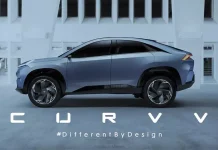Husqvarna Motorcycles, a renowned name in the global motorcycling realm, faces a unique set of challenges in penetrating the Indian market. Despite its global repute, the brand finds itself navigating through an intricate web of consumer preferences, competition, and market dynamics in India.
Husqvarna Motorcycles
From dominance by legacy brands like Hero and Royal Enfield to the nation’s penchant for cost-effective commuter bikes, several factors delineate Husqvarna’s journey in India.
Indian Market
As per the Motorcycles Data in 2022 global Husqvarna sales were 48.262 (+0.8%) the lowest increase in the last decade.
Bad news from India, with sales in 2022 at the half of 2020, the first year of presence in this market.
This introduction seeks to unravel the key reasons behind Husqvarna’s limited visibility on Indian roads.
Brand Recognition
Historically, the Indian two-wheeler market has been dominated by brands like Hero, Bajaj, Honda, and Royal Enfield, which have a strong local presence, wide dealership network, and brand loyalty.
Price Point
While Husqvarna’s India lineup, particularly the Svartpilen and Vitpilen models, is competitively priced, the Indian motorcycle market is highly price-sensitive. Many consumers in India prioritize cost over brand, especially in the commuter segment. This makes it challenging for newer or less established brands to gain significant market share.

Target Audience
Husqvarna bikes in India are more lifestyle-oriented, targeting urban riders looking for a unique, stylish bike. In contrast, the broader Indian market has a significant demand for utilitarian, fuel-efficient, and cost-effective motorcycles suitable for daily commuting.
Service Network
A vast service network is crucial in India. While Bajaj, who manages Husqvarna’s operations in India, has an extensive service network, the specific reach and expertise for servicing Husqvarna bikes might not be as widespread as it is for Bajaj’s primary brands.
Product Lineup
The product range for Husqvarna in India, at least two motorcycles Svartpilen 250 and Vitpilen 250, was limited compared to some competitors. Expanding the range of products could help in attracting a wider set of consumers.
Cultural Fit and Preferences
The cruiser and touring segment (like Royal Enfield) has a particular cultural appeal in India. On the other hand, Husqvarna’s scrambler and cafe racer designs might appeal to a niche, but it’s not as broadly popular in the Indian context.
Competition
The premium motorcycle segment in India has seen increased competition in recent years with the entry of brands like KTM, Yamaha, Suzuki, and even Harley Davidson. This competition makes it challenging for any single brand to capture a large market share.
Initial Reluctance
Whenever a new brand or a relatively less-known brand enters a market, there’s some initial reluctance from the consumers’ end due to uncertainties related to performance, maintenance, resale value, etc.
In the vast and intricate landscape of the Indian motorcycle market, Husqvarna faces a series of formidable challenges. Legacy brands, cultural preferences, and the demand for cost-effective vehicles have traditionally steered the direction of this market.
Conclusion
While Husqvarna brings global acclaim and unique designs, its journey in India underscores the importance of aligning with local consumer needs and market dynamics. As the brand continues its efforts to penetrate deeper into the Indian psyche, it stands as a testament to the ever-evolving nature of global businesses adapting to regional nuances.
The road ahead, although challenging, holds potential for those willing to adapt, innovate, and engage with the heartbeat of the local market.
Despite these challenges, Husqvarna has been gradually making inroads into the Indian market. The situation might change with strategic marketing, more localized production, and a wider product range.





































